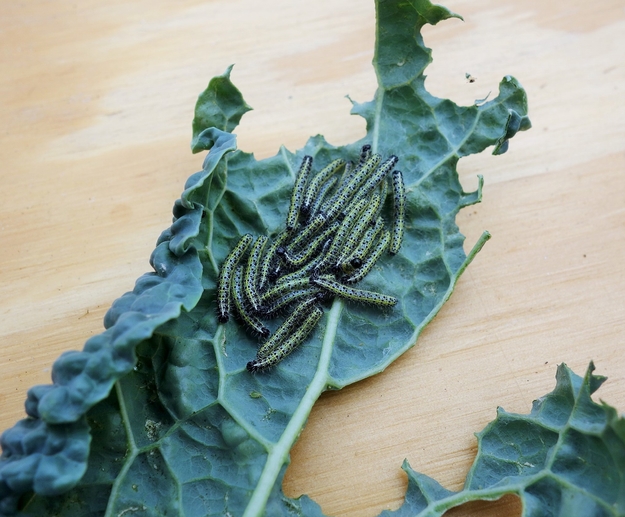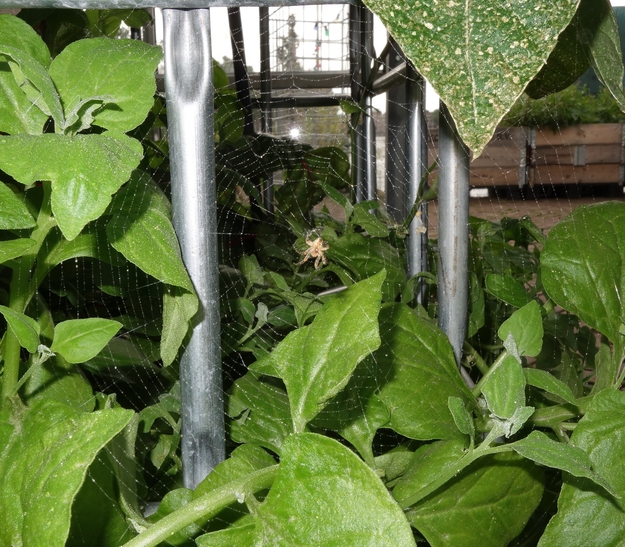Most aquaponics systems are naturally organic, as the entire point is to leverage fish waste as fertilizer, and most pesticides cannot be used safely. Biological control (specifically, using bugs to control other bugs) is our weapon of choice against all the critters attempting to eat our plants before we do.
We've posted before about using ladybirds (ladybugs in the U.S.) to control aphids in our greenhouse. But our little ecosystem is much more complex, and includes both hardworking beneficial bugs as well as a few unwelcome guests.
Many of our beneficial predator bugs were purchased from a biological control company that breeds and sells them for this purpose. Depending on which pests you have, there is likely a predator for hire.
Thrips - Thrips (trips) and the damage they cause, as seen under a microscope
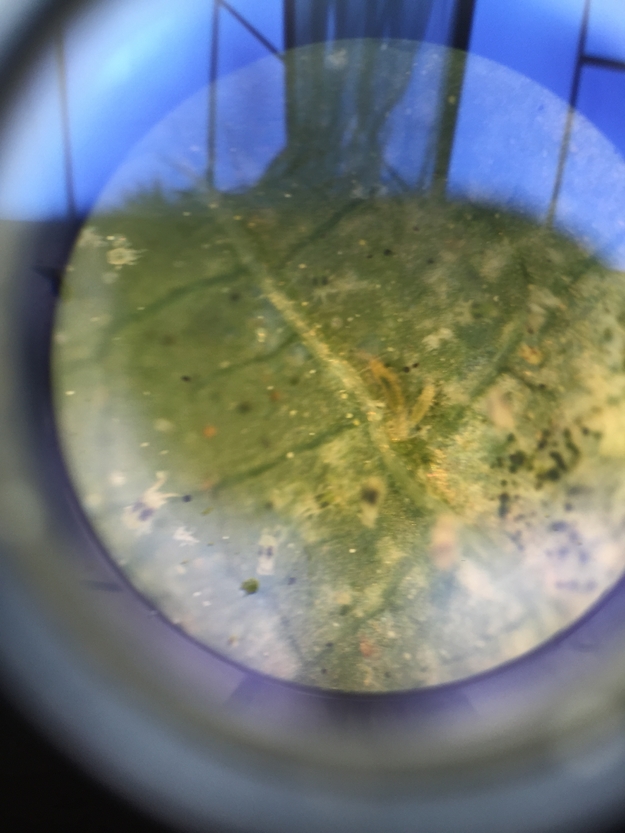
Among the most common garden pests are trips (thrips), also called thunderflies or corn lice. There are thousands of varieties of this strain of pest, but their feeding and egg-laying typically causes dead spots on leaves and weakens the plant. Against these we've deployed a predatory mite known as Amblydromalus limonicus (or Limonica).
Aphidius vespiformis - This tiny predatory wasp helps control aphids
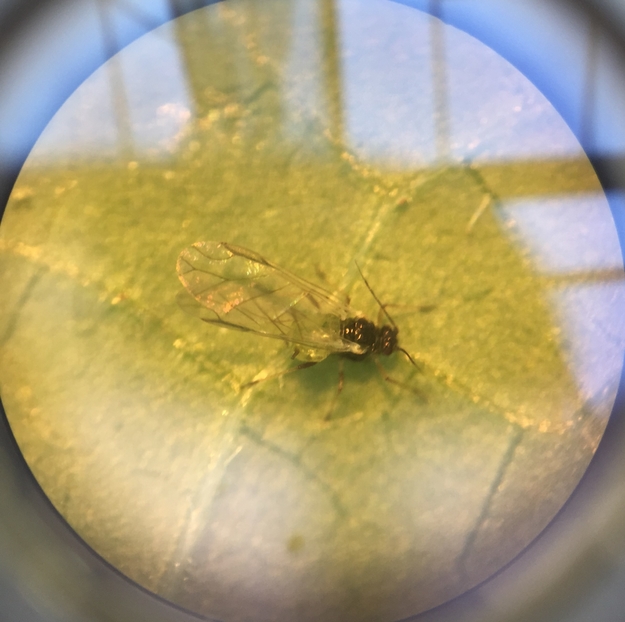
It's also possible to fight thrips with thrips. We purchased a culture of Franklinothrips vespiformis, a predator thrip that resembles a small flying ant or wasp, to attack some of our unwanted thrips.
Tetranychus urticae (spider mites or spint) is another common pest. They cause bruising and discoloration, and can often be identified by spider-like webs left on plant stems. Against spider mites we brought in a tag team duo, Amblyseius californicus and Phytoseiulus persimilis. These predatory mites should make a tidy snack of our pests.
Mite-munching mice - Mice made a snack of our predatory mite cultures
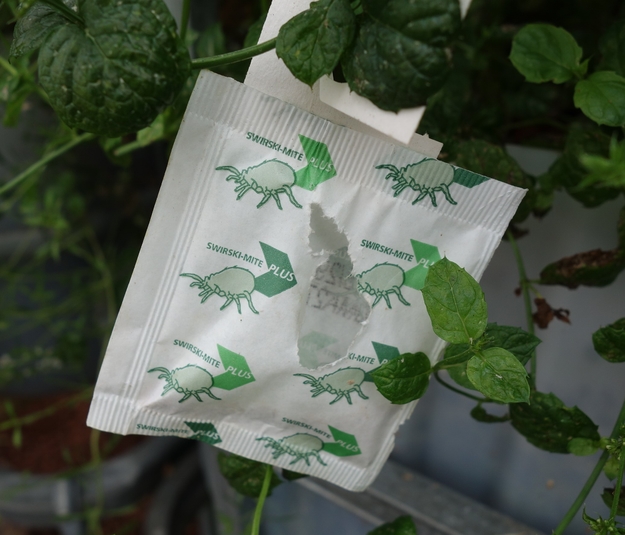
One issue we ran into initially was that instead of mites eating mites, we had our mites eaten by mice! Mite cultures typically contain oatmeal, which turned out to be very appealing to the local rodent population. We soon learned to hang the culture packets out of reach of the mice, which is no small feat, given that our mice are known acrobats.
Despite the ladybird's best efforts, aphids (bladluis) have continued to be a problem. For these we called in air support from Aphidius colemani, a parasitic wasp. The tiny wasps had their work cut out for them, as the aphids are also a food source for ants, which will defend the aphids by driving off predators. In addition to controlling the aphids, we had to control the ants around the perimeter of the greenhouse using a time-tested solution of hot water and borax.
As with our mites, a natural predator also wanted to take advantage of the sudden abundance of small flying insects. Both Franklinothrips vespiformis and Aphidus colemani turned out to make a perfect meal for spiders, which suddenly appeared in record numbers throughout the greenhouse. Typically beneficial critters themselves, given the circumstances the spiders had to go, as they were eating all the bugs we'd paid for while our plants suffered.
Cabbage moths (koolwit) also came in from outside to make a home upon our leafy greens. They may look pretty fluttering around the greenhouse, but their offspring can wreak havoc on leafy vegetables. Without the presence of birds and other natural predators, caterpillars can quickly overrun a vegetable bed. Inspecting leaves for caterpillars and clipping or picking off is one way of controlling them, though it's effort intensive and tough to spot every single one.
It's also possible to remove the adult moths before they lay eggs. Attempting to evict spiders and cabbage moths is particularly difficult, as you're more likely to just end up moving them around. Against these, we deploy a voracious mechanical predator: a vacuum cleaner.
